In Thursday’s Q Lecture, Mckenzie Wark focused on the gaps that exist between data, models, and theory. On Friday, Andrea Loehr talked about the event horizon: the range at which two objects are so far apart in the universe that the photons they emit will never reach each other. Saturday morning saw Badredine Arfi problematize the notion of a discernable present and question the stability of identities that cannot be auto-present. In both the physical or social sciences, the limits to knowledge—and, by extension, common connotations like fixity, stability, and security—have emerged as a preeminent theme for Project Q.
For Saturday’s “War: Memorial, Transformational, Gendered” panel, discussant Megan Mackenzie (University of Sydney/CISS) found this common theme once more. The presentations by Antoine Bousquet (Birkbeck/University of London), Laura Shepherd (University of New South Wales), and Jairus Grove (University of Hawai’i at Mānoa) each focused on new means of thought and action developing around the First World War, but Mackenzie noted that each presentation had a “focus on what we focus on” before introducing the notion of “blind spots” to push the conversation.
Borrowing a definition developed in recent work by Canadian mathematician William Byers, Mackenzie described the blind spot as “not just a spot that we cannot see, but the limitations on our ability to express certain phenomena in words.” Bohr would have likely concurred.

Discussant Megan Mackenzie shares her thoughts on the panel’s presentations. (Photo: Gilbert Bel-Bachir)
Mackenzie explained that the blind spots in our perception and knowledge undermine our sense of the world’s completeness. Each of these presentations shed some light on the blind spots in the way that World War I and its intellectual context are remembered, embracing what Grove called “ways of remembrance that relax these [disciplinary] boundaries so that other kinds of bodies become visible.”
Antoine Bousquet’s “Ernst Jünger and the Prospect of Total Mobilization” focused on the enigmatic German thinker’s fear of an imminent invisibility of bodies in the voracious technological assemblages that emerged during the war. Understanding the soldier and Storm of Steel author, Bousquet explained, required first understanding the strong influence of Nietzsche on his thinking. Jünger identified strongly with Nietzche’s critical diagnoses of modernity, the loss of meaning, and the resulting “pathological intermediate state” of nihilism.
According to Bousquet, “the war was [for Jünger] really an experience of industrial conflict; one that was dominated by technique and would therefore collide with traditional martial values of courage, honour, and valour.” For Jünger, the war was a kind of peak nihilism. As he put it:
The battle of the machines is so colossal that man almost completely disappears before it. Often already, caught in the force fields of the modern battlefield, it seemed to me strange and scarcely believable that I was witnessing world historical events. Combat took the form of a gigantic, lifeless mechanism and swept an icy, impersonal wave across the ground. It was like the cratered landscape of a dead star, lifeless and radiating heat. And yet: behind all this is man. Only he gives the machines their direction and meaning. It is he that spits from their mouths bullets, explosives, and poison. He that elevates himself in them like birds of prey above the enemy. He that sits in their stomach as they stalk the battlefield spewing fire. It is he, the most dangerous, bloodthirsty, and purposeful being that Earth has to carry. (Jünger, La Guerre Comme Expérience Intérieure. 162)
In books like The Worker, Total Mobilization, and On Pain, Jünger defined his era through labor and the figure of the worker. Emphasizing motion and mobilization in language drawing on contemporary scientific revelations in molecular motion and complex processes, Jünger’s metaphysics emphasized an immanence of motion and work. The war’s total mobilizations led Jünger to conclude that “following the wars of knights, kings, and citizens, we now have wars of workers.”
In the photographic complements to his writing, Jünger highlighted the expanding role of mechanization in all aspects of societal mobilization and the developing parallels between work and war. For Jünger, a society of total mobilization prizing technē and the mastery of machines would spell an end for both the bourgeoisie and liberal societies. On account of this “revolutionary conservatism” and the popularity of his writings, the Nazi party viewed Jünger as a potential ally. Unlike his contemporary Martin Heidegger, however, Jünger declined their overtures and experienced the war as an officer, called up along with tens of millions in the kind of mobilizations that he had predicted.
While Jünger was demonstrably wrong about the supersession of nihilism and the ability of “liberal” societies to mobilize (albeit often through illiberal means), he had anticipated the continued and accelerated “technicist mobilization” of the world. Jünger had just not foreseen that it would be technology that undercut the need for total mobilization, as the New Look(s) of nuclear weapons allowed states to circumvent full mobilization while retaining the capacity to inflict immense damage.

Antoine Bousquet starting the panel “War: Memorial, Transformational and Gendered” with his presentation Ernst Jünger and the Age of Total Mobilisation.
(Photo: Gilbert Bel-Bachir)
That said, the later development of Damoclean deterrence doctrines to allay the social costs of perpetual mobilization was anticipated somewhat by Jünger’s 1931 observation that “The history of inventions also raises ever more clearly the question of whether a space of absolute comfort or a space of absolute danger is the final aim concealed in technology.”
Drawing on imagery from atomic physics, Jünger emphasized what he saw as the persistent complementarity of security and risk.
What especially characterizes the era in which we find ourselves, into which we enter more deeply with every passing day, is the close relationship that exists between danger and order. It may be expressed in this way: danger appears merely as the other side of our order. The whole is more or less equivalent to our image of the atom, which is utterly mobile and utterly constant. The secret concealed within is a new and different return to nature; it is the fact that we are simultaneously civilized and barbaric, that we have approached the elemental without having sacrificed the acuity of our consciousness. (Jünger, “On Danger”)
This essential tension, from Jünger’s unstable Weimar through “Peace Through Strength” and on to our Homeland Security, persists. Perhaps no new technology—mechanical, nuclear, or quantum—will ever change that.
Laura Shepherd’s presentation “Trompe l’Oeil: Interrupting the Logics of Security Studies with Women’s Peace Activism” looked to restore women’s anti-war organizing to the blind spots of historical vision.
She began by acknowledging the smoking ceremony of the day prior, emphasizing the lineage of knowledge embedded in the oldest surviving continuous culture in the world and their custodianship of the lands on which we stood. This acknowledgement of elders and predecessors provided a good lead in for her talk, which would trace an oft-neglected lineage of women’s peace activism running from the First World War to the present.
Q2 invited presenters to think through the histories of the present that project justifications for future wars from ones in the past. For Shepherd, “contemporary security politics and practices are organized through a fooling of the eye—a trompe l’oeil—that renders women’s peace activism largely invisible in the war stories that we tell.”
While Jünger pondered the place of men in the expanding war machine, Shepherd looked to interrogate a history in which women were kept invisible all along. She aimed to “look differently, to tell different stories.” But before she could proceed, she felt some brief qualifications to be in order. Shepherd explained that she was not an historian and did not work in archives—at least not any that would be recognized as such. She emphasized that she did not want to talk about security, but rather about peace. And, most importantly, nothing she had to say assumes in any way that women are more inherently peaceful than men or have some special insight into peacemaking or peacebuilding.
With her research focus on women in peace and security governance in both formal and informal spaces, she felt compelled to draw on these research frames for her talk. She would be focusing on women in the informal spaces, in what Cynthia Enloe called “the margins, silences, and bottom-rungs of peace and security”. Shepherd explained that this was a political move, eschewing the traditional emphasis on (overwhelmingly male) loci of power in cabinets, militaries, and the like in favour of emphasizing “ordinary people—ordinary women—doing extraordinary things”
In the war’s antebellum, women’s organizations and political movements were making transnational connections, drawing links between the suffrage movements and broader anti-militarist organizing. In 1915, the Women’s Peace Party was formed in New York City. It quickly internationalized, with American and international delegates making the dangerous journey across the Atlantic to attend the biennial convention of the International Woman Suffrage Alliance being held in the Hague.

Delegates on their way to the 1915 Women’s International Congress for Peace and Freedom. (Photo: Library of Congress)
One outcome of the conference was the formation of the International Committee of Women for a Permanent Peace, a new international body of which the Women’s Peace Party would serve as the American chapter. Another was forming a delegation of activists to lobby their plan for a just peace in Berlin, London, Vienna and more. Though they had been ridiculed by Teddy Roosevelt and unsupported by Woodrow Wilson, their plan’s provisions for free markets and freedom of navigation would nonetheless find their way into Wilson’s Fourteen Points.
“These women laid the foundations for decades of transnational peace activism that continues to the present day,” Shepherd explained. Women’s International League for Peace and Freedom (WILPF), WPP’s successor established in 1919, maintains offices in Geneva and New York where it continues to influence international organizations.
Despite this rich history, women remain seriously underrepresented in peace and security governance. Shepherd cited the findings of a 2012 study by UN Women, which studied 31 major peace processes over ten years and found women made up only around 5% of participants. With the social, political, and economic equality of women in the post-conflict environment correlating positively with the durability of the peace, Shepherd rightfully highlighted this statistic as “truly dismal.”
“The legacy of women’s transnational peace activism is relevant today if we choose to so look for it,” she continued. Organizations like WILPF were instrumental in bringing about the passage of United Nations Security Council Resolution 1325 in the year 2000, providing the foundation of the women’s peace and security agenda at the UN. Shepherd described 1325 and six subsequent resolutions are “the most effective instruments that women transnational activist movements have in the pursuit of demilitarization and positive peace.”
So while most IR and security studies scholarship looks to World War I as inspiration for its security spirals, offense-defense balances, and the like, Shepherd emphasized casting our glance not just at more war but at the “in-between spaces” for the figures in the background so often left underexposed in our frames of the past.

Laura Shepherd shares her research on women’s transnational peace activism during World War I. (Photo: Gilbert Bel-Bachir)
Shepherd reminded the audience in her conclusion that bringing these subjects back into focus is not just the academic exercise in completism, but a crucial expansion of our sense of the possible. “Think about how you think about war and the associative chains that structure your cognitive frameworks,” she implored. “The worlds that we constitute or bring into being are numberless and we need to ensure we’re similarly unlimited in our imaginings.”
Q co-investigator Jairus Grove closed out the panel with “Touched by Fire: World War I and the Rise of an Aleatoric Cosmology in the Thought of Max Planck, Alfred North Whitehead, Marcel Duchamp, and JFC Fullerton,” an ambitious survey of some key thinkers in an attempt to answer the question most often heard at Q: why quantum?
Like earlier presentations by Arthur C. Miller and Stephen Kern, Grove looked at the historical moment as host to what he called a “resonant assemblage of thought” in which people with no biographical confluence could nonetheless have come to similar conclusions to related questions. Grove likened his efforts to “repopulate” the field with Edward Said’s practice of “counter-memory” and repeated Shepherd’s call to embrace different ways of remembrance.
The ontic and epistemic angst provoked by quantum theories prompted for many an existential crisis, exposing cracks in the foundations of centuries of scientific knowledge. Grove proposed that this crisis was not just a crisis in quantum. After investigating some key thinkers and their striving to comprehend a less deterministic world, Grove hypothesized that “the kinds of ethos and generosity they bring” in their means provide independent variables that can explain differences among their thinkings’ respective ends.
For his answer to why quantum? Grove first looked to provide his answer for what quantum? “I don’t want it be primarily a question of physics,” he explained. “What I want to find are alliances not between answers, but between questions. Science envy happens when we think that there are answers in other fields as opposed to seeing ourselves as allies.”
For Grove, quantum provides a chance to think differently about security. Seeking to “get past the metaphoric and the metonymic,” Grove wanted to push on the underlying philosophical questions that could be at the root of the angst that inspires security. Grove implored the audience to think of these connections “not as dialogues, but as conceptual homologies”.
Across these thinkers, Grove identifies thematic questions of scale and the units of analysis. In looking to find what Claude Shannon’s information theory called “the smallest difference that makes a difference,” these thinkers grappled with the implications of quantum phenomena and the passing of a universe of mechanical order.
These thinkers saw that causality must confront real uncertainty—an uncertainty understood as an ontological principle rather than an epistemological question or a problem of measurement. Grove emphasized the need to investigate “non-hierarchical connections of efficacy, meaning connections that make a difference even if we can’t privilege what part of the difference they make.”

Jairus Grove explains his efforts to repopulate a field of quantum thought beyond physics. (Photo: Gilbert Bel-Bachir)
Grove turned first to British philosopher Alfred North Whitehead. Whitehead’s An Enquiry Concerning the Principles of Natural Knowledge was very much a product of the war. Dedicated to his son Eric, who had been killed in service with the Royal Flying Corps, the work’s preface concluded:
Memories are short, and perhaps it is not inapt to put on record circumstances common to the life of all England during years of war. This book is the product of intervals of leisure amid pressing occupation, a refuge from immediate fact. It has been thought out and written amid the sound of guns—guns of Kitchener’s army training on Salisbury Plain, guns on the Somme faintly echoing across the Sussex coast: some few parts composed to pass times of expectation during air-raids over London, punctuated by the sound of bombs and the answer of artillery, with argument clipped by the whirr of aeroplanes. And through the land anxiety, and at last the anguish which is the price of victory.
In Enquiry, Whitehead reckons with the rude awakening to his “rationalist slumber” provided by quantum theories while finding it insufficient for him to think about how nature works. For Grove, this is most similar to the metonymic relationship to quantum: “a provocation to quantum but dissatisfaction with something like a quantum unit.”
Instead, Grove sees the war pushing Whitehead away from the search for discrete properties, identity, and essence and towards processes, relations, and rhythm. This change was at least in part inspired by Bohr’s model of the atom and de Broglie’s wave theory, which prompted him to move away from a more static materialism towards a world of constant motion. For Grove, Whitehead’s move towards a speculative metaphysics is not so much prompted by scientific innovation but rather that many early quantum theorists (Bohr comes to mind) are themselves engaged in a kind of speculative metaphysics.
From here, Grove jumped registers to a pre-Dada Marcel Duchamp, who on the eve of war was experimenting with chance and randomization in what would later become known as aleatoric music. The war then interrupts the dissertation of a young John Maynard Keynes, whose resulting Treatise on Probability insisted that probability was logical and not empirical. In his borrowing from Hume to discount the uniformity of nature, Grove notes that the result is Keynes arguing that we can never escape uncertainty as a philosophical problem. After distinguishing between uncertainty and risk, Keynes posits that while both exist in probability, only risk can be captured. Where risk relates to the lack of complete data on a fixed world, uncertainty comes from the necessity of novelty in the adventurous universe of pragmatists and QBists.
Grove next saw a quantum worldview in the life and work of Emma Goldman, who defied the parochial principles of Marxists, feminists, and anarchists in favor of a proto-intersectionality in which labor, women, and more were all implicated. While her opposition to the draft and the First World War led to her arrest and eventual deportation from the United States, she embraced a politics in which hierarchy, patriarchy, and capitalism were irrevocably entangled. For Grove, her emphasis on direct action “radically changes the scale of politics,” leading her to resist to what she saw as the siren song of suffrage struggles in favor of a politics prioritizing individual autonomy and agency.
Introducing him as “the dark one,” Grove moved next to British strategist JFC Fuller. During his tours in the war, Fuller had pioneered early mechanized infantry and armor tactics. Though his interest in the occult led to a close association with none other than Aleister Crowley in the lead-up to the war, their falling out and Fuller’s wartime experience prompted his post-war attempts to replace the “sorcery” of war with a “science”. Fuller felt that only an inductivist and positivist approach leading to “machine war” could ensure the proper development of the technical forces unleashed by the war.
In his search for a scientific “method of instruction” in The Foundations of a Science of War (1926), Fuller wrote:
Let us look upon normal man as a piece of human machinery, a machine tool controlled by our brain. Let us devise so accurate a system, and let us present it to him in so simple a form, that without thinking, without perhaps knowing what we intend, he with his hands will accomplish what our brains have devised.
Interestingly, where the German Jünger eschewed the Nazis, the British Fuller embraced them just as much as they had embraced his ideas for mechanized warfare. While Guderian and other German tacticians borrowed liberally from his ideas in their development of blitzkrieg tactics, Fuller was a supporter of fascism and ardent admirer of Hitler.
But early on, the Nazis were considerably less enthused by Max Planck and quantum theory more broadly. In a kind of Nazi Lysenkoism, Philipp Lenard, Johannes Stark, and other advocates of what they called Deutsche Physik (German physics) positioned themselves in opposition to quantum theory and relativity. They disparagingly referred to quantum and relativity as Jüdisch Physik (Jewish physics), while Planck, Sommerfeld, and even Heisenberg were labeled “white Jews” for their affiliations with the research of Bohr, Einstein, and other Jewish theoretical physicists.
Grove highlighted the ethos of generosity and openness evident in Planck’s biography, his commitment to the science overriding aesthetic and ideological opposition, sometimes even his own. At a meeting of the Royal Society held to honor Newton in 1947, Planck—the only German scientist in attendance—was introduced as coming from “no country”. The president of the society issued a correction for the ailing Planck, whose son had been executed by the Nazis for collaborating with the resistance, noting that, “The announcement should have been, Professor Max Planck from the world of science.”
Surveying this field, Grove circled around to reasonable skeptics, the social and physical scientists both asking why quantum? for very different reasons. “I think what we need to take seriously is the way in which quantum as a provocation is not nearly or possibly a good or bad provocation,” Grove began to close, “that chaos can go, in some sense, either way.” These thinkers left a foundation of resources with which we can continue grappling with the implications of a world without order. “What would a quantum revolution look like in ethics? In morality?” he asked. “Not because it drew on answers from quantum theory but precisely because it saw a world in which we certainly couldn’t contain uncertainty but had to learn to live in it and maximize the possibilities for invention, thought, and thinking.”

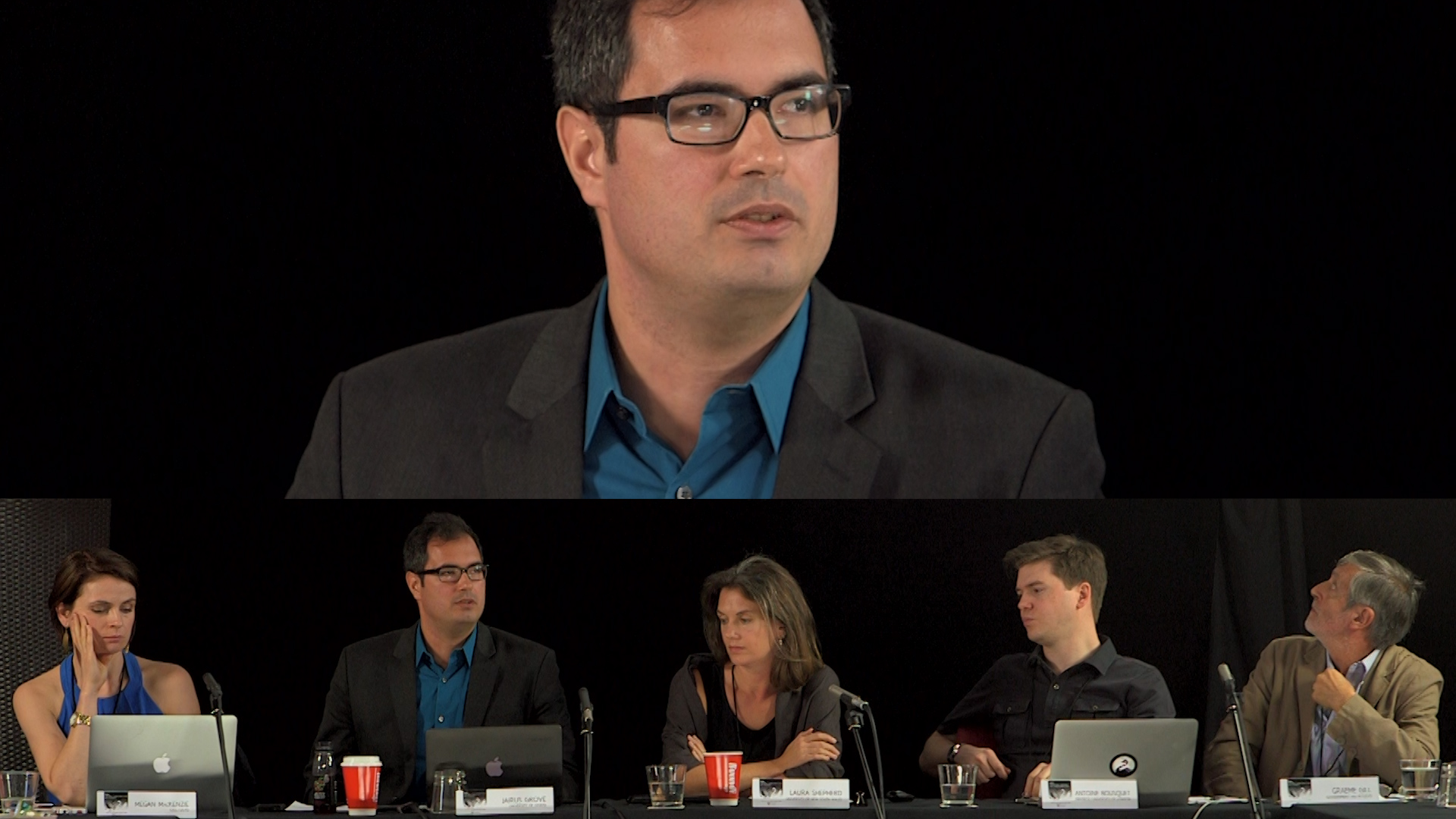

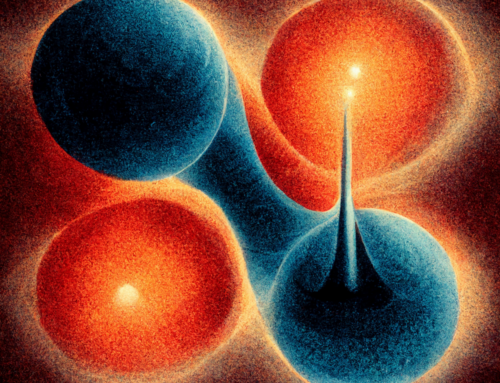
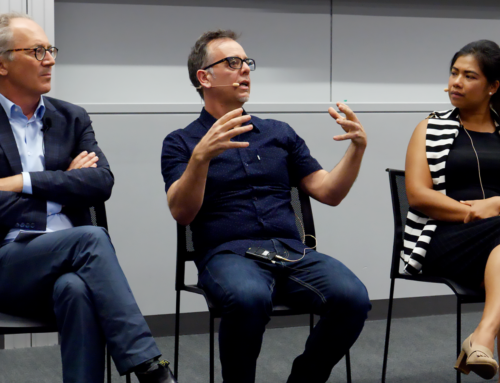
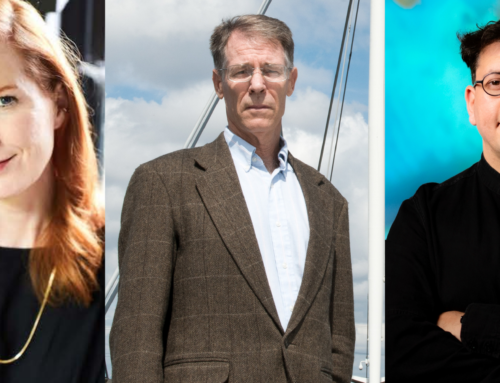

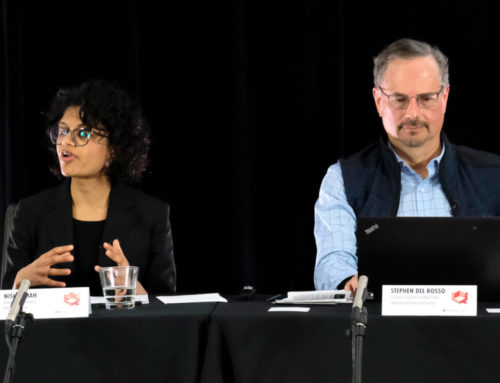
Leave a Reply